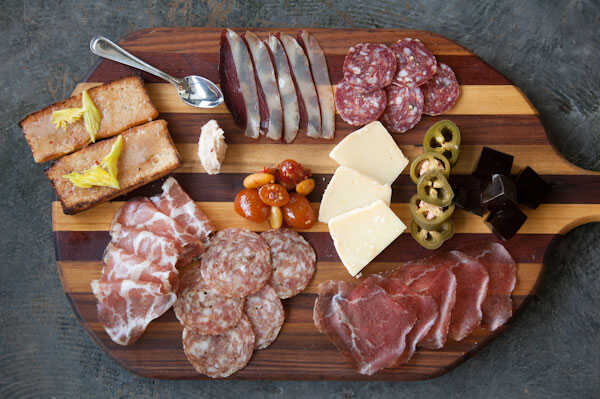
Charcuterie or charcuterie, which is the original French term, is a food preparation technique that involves the processing and preservation of meat, generally through methods such as salting, curing, smoking and fermentation. The term “charcuterie” is of French origin and refers to a variety of cured and prepared meat products such as ham, salami, sausages, pâtés and other meat products.
Charcuterie is prized for its combination of intense flavors and diverse textures, and is often served as an appetizer dish or as part of a cheese and charcuterie board. Presentation plays an important role in charcuterie, and is often artfully assembled on boards or plates, combining cured meats with cheeses, fruits, nuts, breads and condiments.
Some of the best-known charcuterie products include:
Raw ham: Cured ham, or raw ham as it is also known, it is one of the stars of charcuterie, with varieties such as Parma ham, Iberian ham and Serrano ham. It is the most noble and expensive delicacy in charcuterie, and can take up to 3 years to be ready for consumption.
Salami: There are numerous varieties of salami, including Italian salami, which is generally matured for longer and more rigid, the colonial salami, which is softer and has a short maturation time, burger salami which goes through smoking and many others, each with its own characteristic flavor.
Sausages: Cured sausages, such as chorizo, German-style emulsified sausages, such as the hot dog sausages (hotdogs, vinas or frankfurters) that we are very familiar with.
Pâtés: Liver pâtés, like foie gras, are often included on charcuterie dishes and boards.
Terrines: Terrines are preparations of minced meat and other ingredients, often baked in a loaf or cake pan, and may include pork, duck, veal and other ingredients.
Mortadella and cooked ham: Mortadella and cooked ham are very common in snacks and breakfasts in Brazil, they can be pork, chicken, beef or a mixture of meats.
Sausages: Sausages are essential at any barbecue, they are a very traditional sausage that can contain a huge variety of meats and other ingredients, such as cheeses, herbs and even vegetables.
Rillettes: Rillettes are slow-cooked, shredded meats, usually served in pots and spread on bread.
Charcuterie is a culinary tradition that dates back centuries and is enjoyed around the world. It's a delicious way to explore a variety of flavors and ingredient combinations, making it a popular choice for casual meals, special events and celebrations.
History of Charcuterie or Charcuterie
Charcuterie or charcuterie has ancient roots and its origins date back to different cultures and times throughout history. It evolved from meat preservation methods developed by different societies over time. Here is some information about the origin of charcuterie in different regions:
France: The term “charcuterie” has French origins and is derived from meat(chair) and cooked(cuit) and the word “charcutier”, which refers to the butcher or producer of meat products. In France, charcuterie came to prominence during the Middle Ages, when butchers developed meat preservation methods, such as curing and fermentation, to extend the shelf life of meats. Charcuterie products have become an integral part of French cuisine, and France is famous for its varieties of pâtés, salamis and hams.
Italy: Italy also has a long tradition of charcuterie, with products such as Parma ham and a wide variety of salami, such as Milanese salami and Genoa salami. Italian cuisine is known for its creative use of cured meats, which are used in sandwiches, pizzas and many other traditional dishes.
Spain: In Spain, charcuterie is known as “charcutería” and is an important part of Spanish gastronomy. Iberian ham, especially the famous Jamón Ibérico, is one of the most popular and expensive charcuterie products in the world. Additionally, Spain is known for its cured sausages, such as chorizo and salchichón.
Other regions: Charcuterie is not exclusive to France, Italy and Spain. Many other cultures around the world have their own traditions of cured and prepared foods. For example, Germany is famous for its sausages, such as bratwurst and mettwurst, while China has a long history of preserving meat, including the use of drying and smoking methods.
Technological evolution of charcuterie or charcuterie
Use of selected bacterial cultures: The selected bacterial cultures, or starter cultures, play a fundamental role in charcuterie, especially in products such as salami, sausages and fermented products. These cultures are intentionally added to meats to initiate controlled fermentation processes. They convert sugars into lactic acid and other substances, creating an acidic environment that inhibits the growth of unwanted bacteria. Furthermore, these cultures contribute to the development of characteristic flavors and textures in cured products.
The preservation of meat using charcuterie methods has evolved over time with technological advances that have improved the efficiency and safety of the processes. Here are five technological developments in meat preservation using charcuterie methods:
Refrigeration and controlled refrigeration: The invention of refrigeration systems, such as refrigerators and cold rooms, allowed the safe storage of fresh meats for extended periods. This has reduced reliance on traditional preservation methods such as curing and fermentation for short-term preservation.
Use of sodium nitrite and sodium nitrate: The addition of sodium nitrite and sodium nitrate, usually in a mixture called curing salt, in cured meat products such as bacon and ham, plays an important role in preventing the growth of pathogenic bacteria, as well as giving these products their characteristic color and flavor.
Vacuum packaging: Vacuum packaging technology allows air to be removed from packaging, creating an anaerobic environment that inhibits the growth of microorganisms responsible for food spoilage. This is widely used in preserving cured meats and charcuterie products.
Controlled dehydration and smoking: Dehydration and smoking are traditional preservation methods used in charcuterie. The evolution of these techniques includes the use of modern equipment to precisely control temperature and humidity during the drying and smoking process, ensuring food safety.
Use of fungal cultures: Fungal cultures(mold), such as Penicillium nalgiovense and Penicillium candidum, are used intentionally in charcuterie to promote the growth of white or blue mold on specific products. This is common in moldy salami, such as white salami, where the mold plays a role in protecting the meat from unwanted bacteria and developing characteristic flavors. Additionally, some fungal cultures contribute to the formation of a protective shell on cured products, helping to maintain internal moisture and texture.
Brazilian charcuterie products
Brazil has its own tradition of preparing meats and cured foods which, although influenced by different cultures, predominantly European, has distinct characteristics. Below is a relationship with some of Brazil's charcuterie products.
Calabrian sausage: A pepperoni sausage is a type of spicy sausage that has its roots in Italian cuisine. It is very popular in Brazil, especially in the cuisine of the south and southeast of the country, where it is used in feijoadas, pizzas, boards, grilled with onions on plates and many other preparations.
Tuscan sausage: A Tuscan sausage is a variety of fresh sausage that was influenced by Italian cuisine. It is extremely common at barbecues.
Paio: Paio is a smoked sausage that is influenced by Portuguese cuisine and is very popular in Brazil. It is often included in feijoadas and consumed as an aperitif or as part of appetizers.
Linguicinha cuiabana: Originally from the state of Mato Grosso, the gourd sausage is a typical sausage from the central region of Brazil. It is seasoned with milk and local ingredients, such as sweet pepper, which gives it a characteristic flavor.
Beef jerky and charque: Beef jerky is salted and dehydrated beef, and has been widely used in Brazilian cuisine for centuries. It is an essential ingredient in popular dishes such as feijoada and carreteiro rice.
It is important to note that many Brazilian charcuterie products are influenced by different culinary traditions, especially European ones due to immigration, and have evolved to meet the tastes and ingredients available in the country. Although these products have distinct characteristics, they are part of a rich Brazilian culinary tradition.





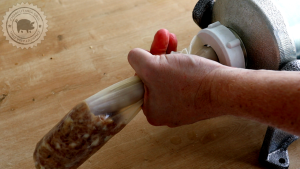
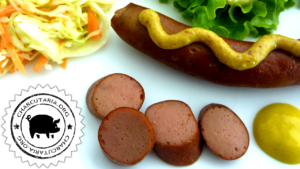
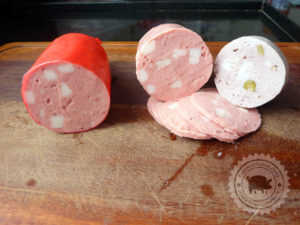
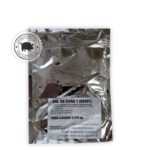

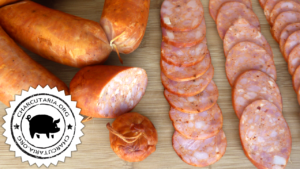
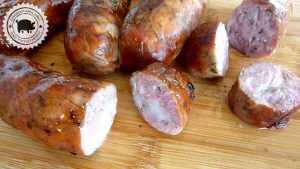
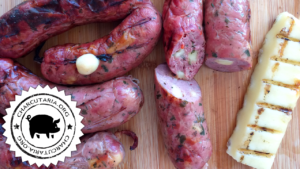
God is mouth watering, I think it takes a little bit of work, but the result of this recipe is sensational.